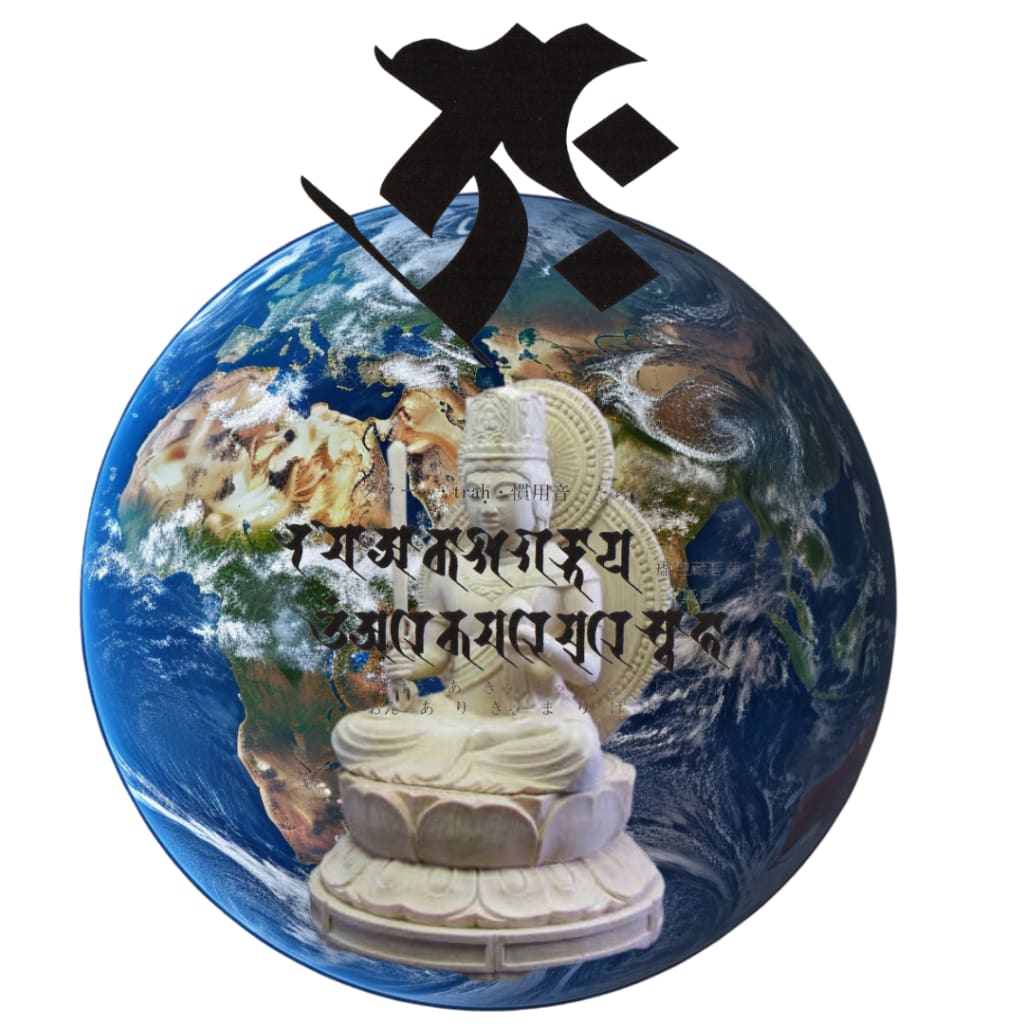本尊・成仏法・僧:仏教の三宝で創る幸せな人生
The conditions in life that a person is born with are called ``fate,'' and this includes conditions that determine one's fate over the course of one's life (e.g., developing cancer, getting a divorce, dying from a sudden death).
The Buddha's Dharma gives practitioners the ultimate power (the power to attain Buddhahood) to sever ``karma,'' set people free, and create their best destiny. The final state is to ``achieve complete liberation from one's karma = to become a Buddha.''
Buddha himself became a Buddha through ascetic practices, and after that he went on to spread the teachings and methods of becoming a Buddha (the Dharma of Buddhahood) to others.
Faith in Buddhism is based on three major elements: ``Buddha'', ``Dharma'', and ``Sangha''.
``Buddha'' is an object of faith, and the ``Genuine Buddha Sharison'', which is the holy bone of Shakyamuni Buddha, is the highest principal image for Buddhists.
``Dharma'' is ``the method of attaining Buddhahood,'' and it is a method for anyone, living or dead, to cut off their karma, liberate themselves from their karma, and become a Buddha. The ``Seven Departments and Thirty-Seven Ways'' taught in the Agon Sutra is the method for attaining Buddhahood.
A ``monk'' is a Sangha whose main object is the True Buddha's Shari, and a religious organization that practices the method of attaining Buddhahood as taught directly by Shakyamuni Buddha.
ヒトはみな、環境(国や時代、家族等)や性別、容貌、体質、性格等において、それぞれ異なる条件を持って生まれます。
さらに、これらの条件の他に、生涯の流れの中で運命を決定するような条件もあるのです。
それはたとえば必ずガンを発症する、離婚をする、横変死する、といったものです。
さらに、これらの条件の他に、生涯の流れの中で運命を決定するような条件もあるのです。
それはたとえば必ずガンを発症する、離婚をする、横変死する、といったものです。
このような生まれつき持った人生上の条件を「因縁」と呼びます。
仏陀の法は、これらの「因縁」を断ち切ってヒトを自由にし、同時に最高の運命を創造する究極の力(成仏力)を修行者にもたらします。その究極の状態が「完全なる因縁解脱を成就する=仏陀になる」ことです。
お釈迦さまはまずご自身が修行によって仏陀になられ、その後、八十歳で入滅されるまでの生涯を、人々に仏陀になる教えと方法(成仏法)を布教して歩かれたのです。
仏教における信仰は、
仏法僧の「三宝」によって成り立つ
仏法僧の「三宝」によって成り立つ
仏教における信仰は、「仏」「法」「僧」の三大要素によって成り立ちます。仏教教団は、この三つの要素が正しいものであると同時に、すべてそろっていなければなりません。
一、仏
その宗旨における信仰の絶対対象である仏を「本尊」と呼びます。阿含宗の本尊は、釈迦の聖霊(せいれい)が宿る聖物(せいもつ)として、昔から仏教徒の間で深く尊崇されている「真身舎利(しんじんしゃり)」です。
阿含宗では、これを「真正仏舎利尊(しんせいぶっしゃりそん)」と呼んでいます。
仏教徒にとって、ゴータマ・ブッダ=お釈迦さまのご聖骨である真正仏舎利は「生いける釈迦」そのものであり、仏教では唯一最高の本尊です。
想像や概念上の仏ではなく、木像や図像の仏でもなく、ブッダとして実在した釈迦の聖骨であり、仏教における最高の本尊です。
その宗旨における信仰の絶対対象である仏を「本尊」と呼びます。阿含宗の本尊は、釈迦の聖霊(せいれい)が宿る聖物(せいもつ)として、昔から仏教徒の間で深く尊崇されている「真身舎利(しんじんしゃり)」です。
阿含宗では、これを「真正仏舎利尊(しんせいぶっしゃりそん)」と呼んでいます。
仏教徒にとって、ゴータマ・ブッダ=お釈迦さまのご聖骨である真正仏舎利は「生いける釈迦」そのものであり、仏教では唯一最高の本尊です。
想像や概念上の仏ではなく、木像や図像の仏でもなく、ブッダとして実在した釈迦の聖骨であり、仏教における最高の本尊です。
二、法
「成仏法(じょうぶつほう)」
生者、死者を問わず、カルマ(業)を断ち切り、因縁解脱(成仏)してブッダ(真理に目覚めた人)になる方法です。
釈尊が阿含経の中で説かれている、「七科三十七道品」がその成仏法です。
生者、死者を問わず、カルマ(業)を断ち切り、因縁解脱(成仏)してブッダ(真理に目覚めた人)になる方法です。
釈尊が阿含経の中で説かれている、「七科三十七道品」がその成仏法です。
三、僧
真正仏舎利尊を本尊とする、サンガ(僧伽)、すなわち教団です。
「すべてのカルマを断つ釈迦直説の成仏法
「すべてのカルマを断つ釈迦直説の成仏法
All human beings are born under different conditions in terms of environment (country, era, family, etc.), sex, appearance, constitution, personality, etc.
In addition to these conditions, there are also conditions that determine fate in the course of life.
For example, it always causes cancer, divorces, sideways death.
In addition to these conditions, there are also conditions that determine fate in the course of life.
For example, it always causes cancer, divorces, sideways death.
The innate condition of life is called “fate”.
The Buddha's law cuts off these "causes" and frees humans, and at the same time brings the ultimate power (seibutsu power) to create the ultimate fate for practitioners. The ultimate state is to "become Buddha to achieve complete fate resolution".
The Buddha first went to Buddha by training himself, and then walked the life until he was destroyed at the age of 80, preaching to people the teachings and methods (Buddha Law) of becoming Buddha.
Faith in Buddhism is
Established by the Buddhist monk's "three treasures"
Established by the Buddhist monk's "three treasures"
Faith in Buddhism consists of three major elements: "Buddha," "law," and "monk." The Buddhist denomination must have all three elements correct and at the same time.
One, Buddha
The Buddha, which is the absolute object of religion in that denomination, is called "honson". The main priest of the Agō sect is the Shinshinsari, which has long been deeply revered among Buddhists as a sacred object in which the Holy Spirit of Buddha lives.
This is called "Shinsei Bussharison" by the Agō sect.
For Buddhists, the authentic sacred Buddha, which is the sacred bone of Gautama Buddha, is the "living Buddha" and is the only Buddhist highest deity.
It is not an imaginary or conceptual Buddha, not a wooden or iconic Buddha, but the sacred bone of the Buddha, which was the real Buddha, and the highest Buddhist deity.
The Buddha, which is the absolute object of religion in that denomination, is called "honson". The main priest of the Agō sect is the Shinshinsari, which has long been deeply revered among Buddhists as a sacred object in which the Holy Spirit of Buddha lives.
This is called "Shinsei Bussharison" by the Agō sect.
For Buddhists, the authentic sacred Buddha, which is the sacred bone of Gautama Buddha, is the "living Buddha" and is the only Buddhist highest deity.
It is not an imaginary or conceptual Buddha, not a wooden or iconic Buddha, but the sacred bone of the Buddha, which was the real Buddha, and the highest Buddhist deity.
Two, the law
"Seiji Buddhism"
It is a method of cutting off karma (work) regardless of whether it is a living person or a dead person, and releasing the causal relationship (seibu) to become Buddha (a person who has awakened to the truth).
The Buddha's law is the "Nanashina Thirty-seven Doshin," which Buddha is taught in the Akane Sutra.
It is a method of cutting off karma (work) regardless of whether it is a living person or a dead person, and releasing the causal relationship (seibu) to become Buddha (a person who has awakened to the truth).
The Buddha's law is the "Nanashina Thirty-seven Doshin," which Buddha is taught in the Akane Sutra.
Three, monk
It is a sangha (monk), or cult, whose main Buddhist image is the Buddhist priest.
"The Buddhist Law of the Buddha, which cuts off all karma
"The Buddhist Law of the Buddha, which cuts off all karma
http://cyber-price.com/buddha/
Buddha Japan Journal
Buddha Japan journal
日本の仏教を発信しますSend Japanese Buddhis
Buddha 2Japan journal
日本の仏教を発信しますSend Japanese Buddhis sサイト
大日如来の智慧を表現した「金剛界」 .一印会 "Kongokai" expressing the wisdom of Dainichi Nyorai.Ichiinkai
胎蔵界曼荼羅 たいぞうかい Womb Realm Mandala Taizokai
瞑想のcyber--price

















